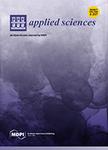版权所有:内蒙古大学图书馆 技术提供:维普资讯• 智图
内蒙古自治区呼和浩特市赛罕区大学西街235号 邮编: 010021

作者机构:Beijing Univ Posts & Telecommun Sch Artificial Intelligence Beijing 100876 Peoples R China Univ Surrey Ctr Vis Speech & Signal Proc SketchX Surrey GU2 7XH England Natl Univ Singapore Dept Comp Sci Singapore 119077 Singapore
出 版 物:《APPLIED SCIENCES-BASEL》 (Appl. Sci.)
年 卷 期:2025年第15卷第4期
页 面:1751-1751页
核心收录:
主 题:sketches video object segmentation sketch-based datasets
摘 要:In this paper, we propose sketch-based video object segmentation (SKVOS), a novel task that segments objects consistently across video frames using human-drawn sketches as queries. Traditional reference-based methods, such as photo masks and language descriptions, are commonly used for segmentation. Photo masks provide high precision but are labor intensive, limiting scalability. While language descriptions are easy to provide, they often lack the specificity needed to distinguish visually similar objects within a frame. Despite their simplicity, sketches capture rich, fine-grained details of target objects and can be rapidly created, even by non-experts, making them an attractive alternative for segmentation tasks. We introduce a new approach that utilizes sketches as efficient and informative references for video object segmentation. To evaluate sketch-guided segmentation, we introduce a new benchmark consisting of three datasets: Sketch-DAVIS16, Sketch-DAVIS17, and Sketch-YouTube-VOS. Building on a memory-based framework for semi-supervised video object segmentation, we explore effective strategies for integrating sketch-based references. To ensure robust spatiotemporal coherence, we introduce two key innovations: the Temporal Relation Module and Sketch-Anchored Contrastive Learning. These modules enhance the model s ability to maintain consistency both across time and across different object instances. Our method is evaluated on the Sketch-VOS benchmark, demonstrating superior performance with overall improvements of 1.9%, 3.3%, and 2.0% over state-of-the-art methods on the Sketch-YouTube-VOS, Sketch-DAVIS 2016, and Sketch-DAVIS 2017 validation sets, respectively. Additionally, on the YouTube-VOS validation set, our method outperforms the leading language-based VOS approach by 10.1%.